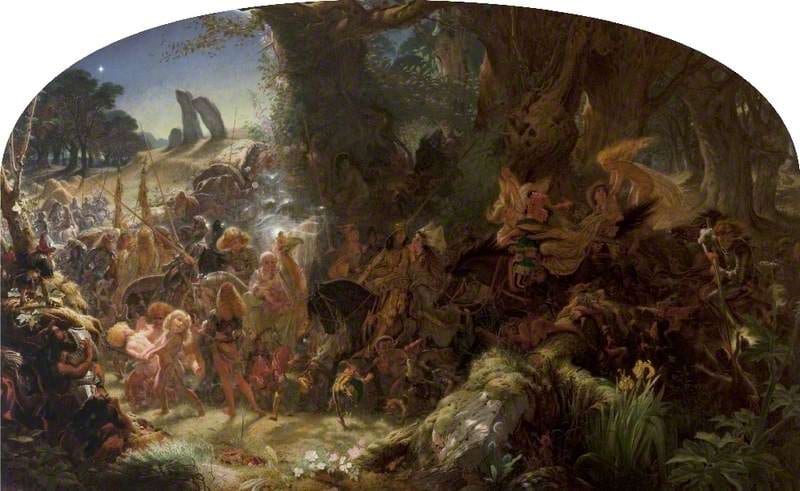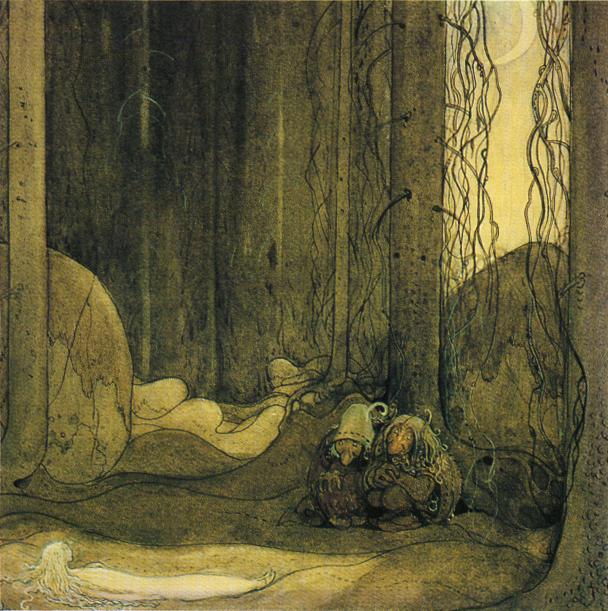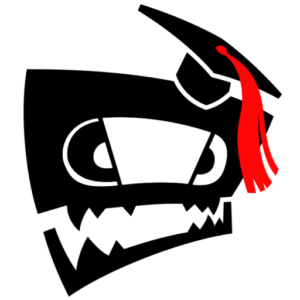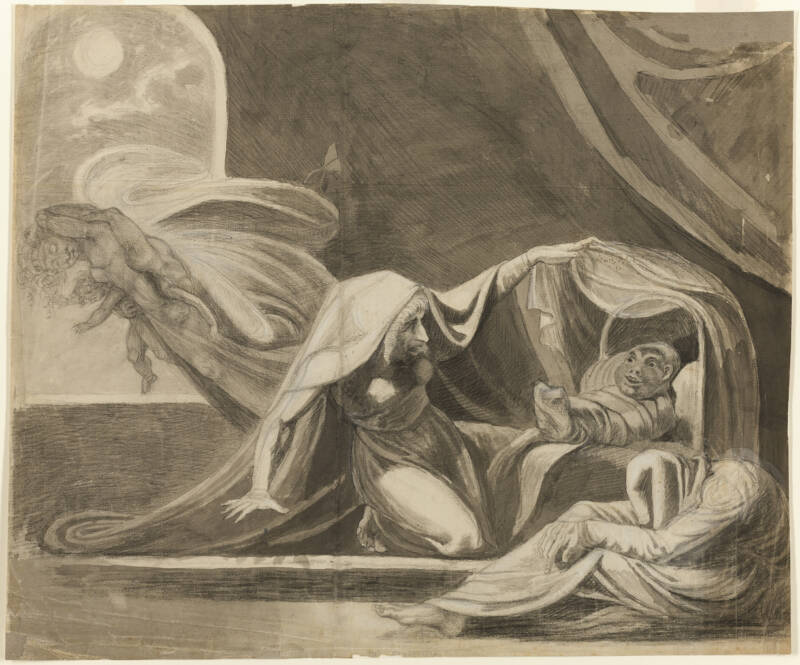If you thought fairies were all about magic and pixie dust, you’re wrong! According to mythology, fairies are also into stealing babies and murder. Changelings were fairies left behind to replace a human infant or child stolen by them.
What is a Changeling?
In the European myth, a human baby or child is stolen by a fairy, demon, or troll. When the parents go to the cradle, they find a supernatural child instead of their offspring.
In European folklore, a changeling (a.k.a. auf or oaf) is the malformed or imbecilic offspring of a fairy or elf secretly sent to replace a human baby.
According to folklore, the kidnapped human babies are either given to the devil or used to bolster fairy populations. The original child can be brought back by making the auf laugh or torturing the auf; this last belief was responsible for child abuse during those times.
Changeling Traits in Mythology
In Irish mythology, a fairy child may seem unhealthy, deformed, and not grow as quickly as a regular child. They may have strange facial features like a beard and long teeth. A fairy child may be intelligent beyond their years and show creepy insight.
One of the most common ways for a changeling to identify themselves is to exhibit strange behavior when they think they are alone, including jumping, dancing, or playing a musical instrument.
Folklore from Wales
A farmer and his wife in northern Wales live in a cottage with their infant son. One day, while the farmer was in the field, the wife left the child in the cradle while she visited her neighbor. She encountered the Twyleth Teg (the fairy of Wales) during her visit. So, she was greatly relieved to find the cradle undisturbed upon her return.
The child grows sick and howls for hours. The farmer suggests putting the creature on a hillside to see if the fairies will reclaim it. The wife disagrees and seeks advice from the old lady next door. The old lady suggests boiling an egg near the cradle to determine if it is her son or a fairy. The infant watches closely and asks what she is doing.

Joseph Noel Paton (1821–1901)
The woman answers that she is making dinner for the men in the fields. The fairy creature laughs and says he has never seen an eggshell brew dinner before harvest men.
The wife throws the infant on the fire, and the creature changes into a puff of smoke, revealing it is not her son but a fairy who has taken his place. And Twyleth Teg returns her fine son.
Scottish Tales of the Changeling
In another story from the West Highland region of Scotland, the son of the local smith is taken away and replaced by an evil-tempered changeling called Sibhreach.
The changeling is exposed and cast out, but the mortal child is still missing, so the smith searches under a fairy hill under the night sky.
He listens to the sounds of fairy music as he waits for the hill to open. Armed with his Bible, knife, and cock, he steps boldly into the court of the fairies.
The Bible keeps him safe from their evil, the knife holds the door to the hill open, and the cock crowing is so irritating to the fairies that they throw the smith, his son, back into the land of the living.
Scandinavian Legend
In Nordic traditional belief, trolls or beings from the underground swapped children. Often, Scandinavian parents placed an iron item in the cradle of an un-baptized child. If the child was stolen, the parents could be cruel to the changeling, so the trolls would return their child.

In one Swedish tale, the human mother refuses to brutalize the changeling as she cannot mistreat an innocent child despite knowing its fairy identity.
When her husband demands she abandon the changeling, she refuses again, and he leaves her. He then meets their son in the forest, set free because his mother made sacrifices.
The Spanish Myth
The Xana are mythical fairies in Asturia, Spain. This mythology claimed that the Xana lived in the fountains of rivers and waterfalls or the woods with clean water and helped travelers. They were conceived as little female fairies with supernatural beauty and delivered babies called Xaninos.
Often swapped with human babies, these Xaninos, parents used many ways to differentiate from human babies.
Usually, the infant is taken for three reasons: to become a servant, to give the fairies a human child to love, or for revenge. Sometimes, it was in exchange for an old fairy, traded to live out her life in the care of a human or so they could die. Usually, the chosen were the fairest and most beautiful kids since the fairies liked and admired them.
— FOUNDATIONS OF HORROR —
Further explore these subgenres & tropes. more>>
#Monster horror | #Capital M Monsters

Final Take: Tales of a Dark Past
In medieval times, children with deformities were thought to have been replaced by changelings, leading to their abandonment or even death.
The changeling tales persisted into the 19th century and are related to wild child tales like The Jungle Book and Peter Pan, when Peter becomes a kind of fairy and steals away the children.
These wild-child stories focus on children living in a world beyond adult rules, befriended by animals, fairies, outlaws, and forest creatures.
Main image: “The Changeling” by Henry Fuseli (1780).
Last Updated on November 12, 2023.

